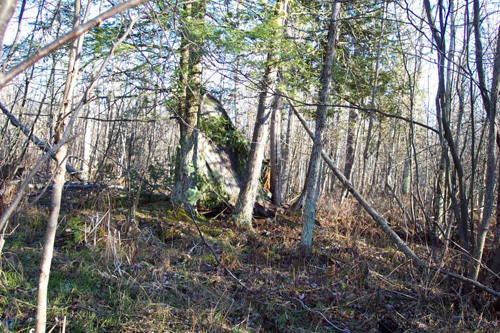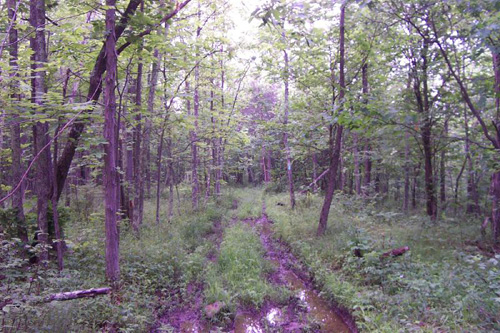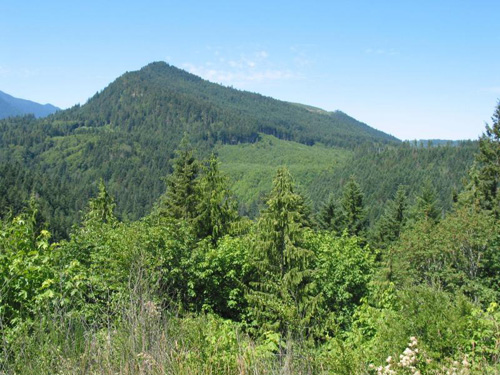Clearcutting Controversy
By: Elizabeth Doty (email)
Clearcutting has been one of the most publicly controversial issues for at least 25 years; however, clearcutting remains one of the primary regeneration methods used in managing forests today.
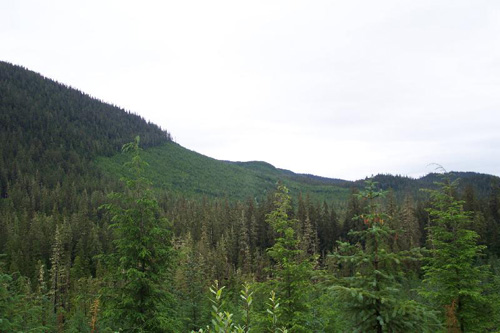
Clearcut from a distance (webshots.com)
What is a Clearcut?Clearcutting is a regeneration method involving cutting all the trees in one area at one time with the expectation that a new, even-aged forest will be established either from natural seeding , stump sprouting, or re-planting.
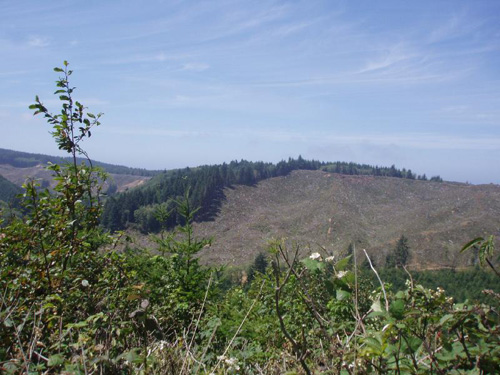
Recent clearcut (webshots.com)
There are few factors which must always be considered when determining the proper forest management for an area. Theses factors are: Economics, Biology and Social values.
A question you might ask yourself when considering economical factors:
Question: How does clearcutting relate to economic welfare?
Clearcutting creates change in a forest ecosystem, but the ecosystem is not destroyed . There is no doubt that clearcutting alters the forest site, but most changes are minor and temporary. Also, it can be the most financially efficient source of forest harvesting and regeneration of stands.
One year clearcut site (webshots.com)
Benefits of Clearcutting:
One of the largest benefits of clearcutting is the reduction of high operating costs of logging machinery and labor, which can make selective cutting and other processes more costly.
In addition to harvesting and regeneration efficiencies, the changes from clearcutting can also be used to manage for other positive results including, reduction of wildfire hazards and providing habitat for wildlife.
Slash and debris = Fire Hazard (webshots.com)
Biological Factors:
Clearcuts are often implemented to mimic various types of natural disturbances. Consider, for example, a portion of a forest that has been cleared due to logging, a storm, a fire, or a landslide.
In the absence of tall trees, the ground is exposed to intense sunlight. Many species of trees begin to grow and compete for the sunlight. Initially, the fastest-growing trees dominate the forest, shading the rest.
Social Factors:
Due to its negative perceptions about land use; clearcutting has become a big concern for policymakers.
There have been several attempts to regulate clearcutting by:
1) restricting the size of individual clearcuts and 2) postponing harvest of adjacent stands until clearcut stands reach a minimum age or height
Postponed harvest of mature pine (webshots.com)
Myth or Fact?
“ Clearcuts cause immensely more soil erosion and compaction than partial cuts ”
One of the biggest myths about clearcutting is that it creates more soil erosion and compaction than other harvesting methods.
In reality clearcutting is less damaging to site in terms of erosion and compaction, because you only disturb the site once during the life of the stand.
Example of soil compaction on forest road (webshots.com)
Myth or Fact?
“Clearcuts are biological deserts with no potential for wildlife habitat”
This is yet another myth clearcuts are great habitat for wildlife, and create a wide range of species diversity.
Timber Management is Wildlife Management!
New growth following clearcut (webshots.com)
Questions:
1. Is Clearcutting good or bad? (Explain)
2. What is a Clearcut?
3. How do clearcuts mimic natural disturbances?
4. Do Clearcuts Destroy or Create Wildlife Habitat?

